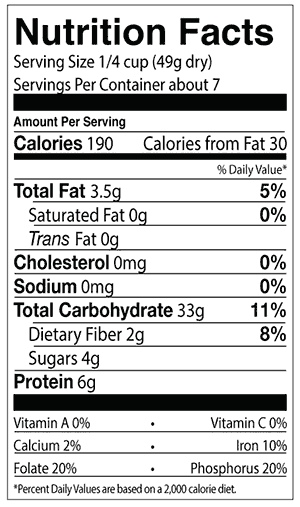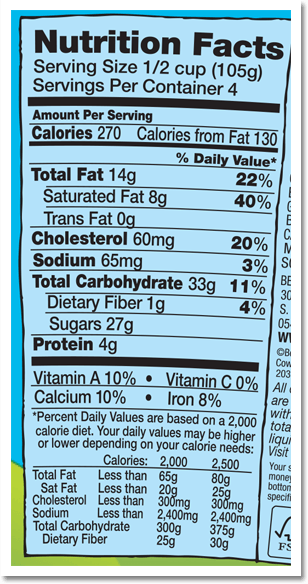Eat Smarter: How to Read Nutrition Labels
Posted by Julie on Mar 6th 2017
March is National Nutrition Month. If your intentions to eat smarter in the New Year have fallen by the wayside, now's the perfect time to get back on track.
Start with a refresher course on how to read nutrition labels. We'll examine two nutrition labels and highlight the key details that are often overlooked.
Nutrition Labels: Example #1 -- Alter Eco Quinoa
Let's start with the healthier of two labels. This one comes from Alter Eco Quinoa:

First, look at Serving Size. With foods like quinoa, serving size is based on uncooked amounts. This is helpful for planning out the number of servings in a recipe, as well as portion control. Plus, we love it when the serving size is given in weight as well as volume, since we swear by our kitchen scale.
Next, look at the number of servings in the container. This information can help you determine whether you'll have enough for a particular recipe, and how much you'll have left. For example, if a recipe calls for 1 cup of dry quinoa, you can make it with this box. But if you want to make it again in a couple weeks, you'll need to get another box.
The four macronutrients -- carbohydrates, protein, fiber and fat -- are listed next. Fat may be broken down into different types of fat; this label shows saturated fat and trans fat. Fiber may be broken down into soluble and insoluble fiber, such as on a canister of oatmeal or box of cereal. Finally, the amount of sugar is listed as part of the total carbohydrates.
The label also shows cholesterol and sodium. It can be helpful to compare different varieties of packaged foods to find lower sodium options. Then you can add salt or other seasonings to your own taste. Once you start reading labels, it may be an unpleasant surprise to see how much sodium is in packaged foods.
Nutrition Labels: Example #2 -- Ben & Jerry's Ice Cream
This label comes from Ben & Jerry's Half Baked Ice Cream. (We confess: It's one of our favorites.)

As you can see, there are four 1/2-cup servings in this pint of ice cream. The label shows calories for each serving; if you eat the entire pint at once, you'll need to multiply all of those numbers by four. Those calculations might help you exert a little willpower.
Of the 14 grams of fat per serving, eight of those are saturated fat. For someone who eats 2000 calories per day, that's nearly half of their daily allotted saturated fat in one serving.
Likewise, the cholesterol in one serving of ice cream is also pretty hefty. However, according to WebMD, dietary cholesterol is not as great of a concern as saturated fat.
Finally, look at the breakdown of carbohydrates and sugar. The 33 grams of carbohydrates in a serving of ice cream comprises only 11% of the daily allotment for a 2000-calorie diet. But that includes 27 grams of sugar, which is nearly seven teaspoons of sugar.
Nutrition Labels: Final Notes
Our nutrition labels don't currently differentiate between naturally-occurring sugar, like lactose in milk and cream, and added sugar. Like sodium, sugar is often added to packaged foods as a preservative. While it isn't too shocking that premium ice cream is high in sugar, it can be eye-opening to look at how much added sugar is in bread and pasta sauce.
We have both quinoa and ice cream in our kitchen at home, along with plenty of other foods that don't carry a nutrition label (like fresh fruits and vegetables!). There's room for all sorts of foods in our diets! The key is to understand more about what you're eating, and how much of it you consume at once. That's where nutrition labels can really come in handy.

